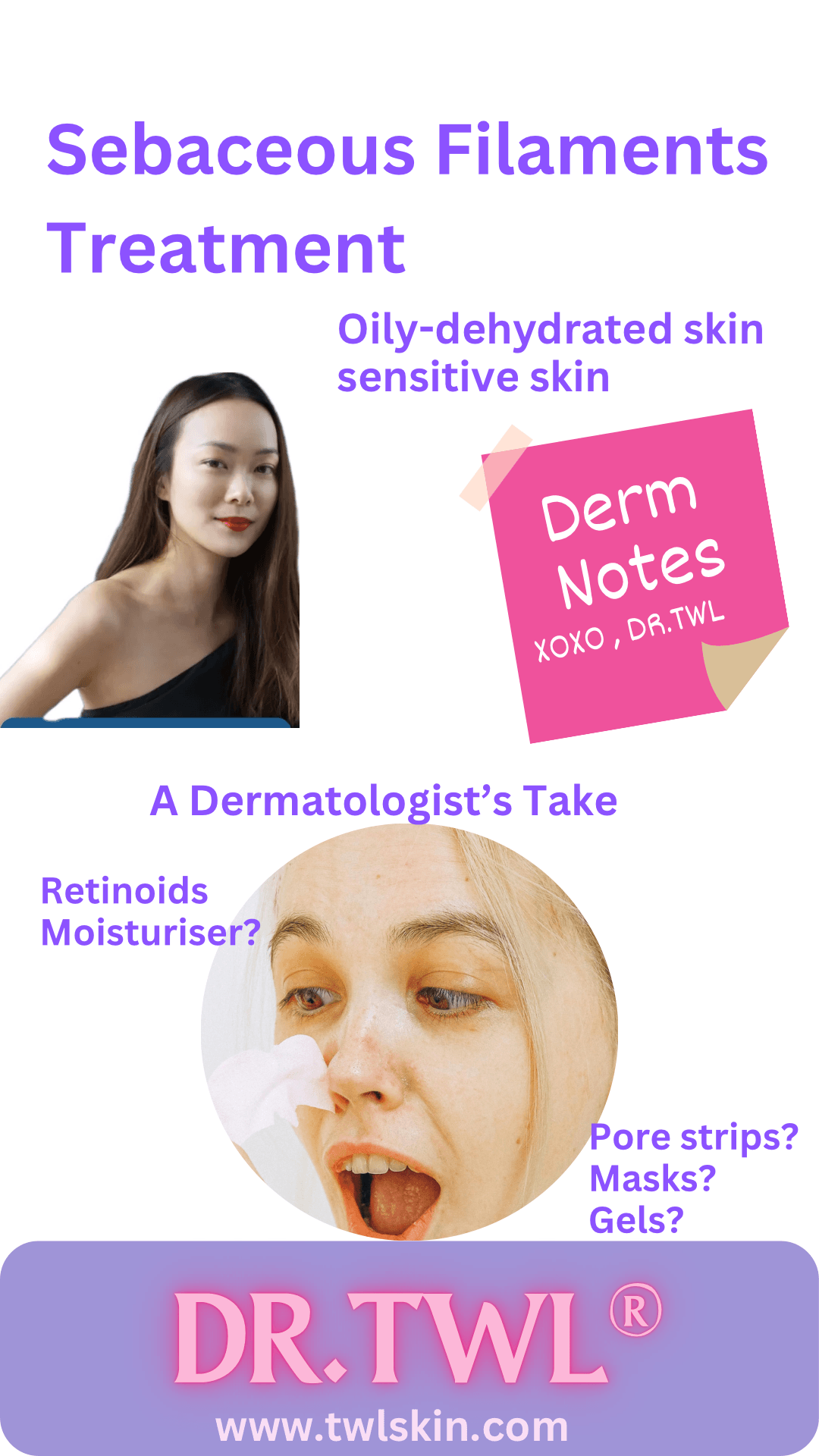Sebaceous Filaments Treatment—A Dermatologist’s Take
March 25, 2024
Retinoids, Moisturiser or Gel Masking for Sebaceous Filaments:
What works and what doesn’t? Sensitive, Oily-dehydrated skin edition
Ask a Dermatologist: What are Sebaceous Filaments?
-
Sebaceous filaments are thin tubes that line your sebaceous glands
What’s inside a sebaceous filament?
-
Oil glands produce oil, and so the joining tubes known as sebaceous filaments are filled with sebum
-
Sebum is produced by the glands and travel via the filaments to the skin surface
What causes sebaceous filaments to be visible?
-
Excess oil production can cause your sebaceous filaments to become more obvious
Are sebaceous filaments a sign of unhealthy skin?
No! Sebaceous filaments healthy part of your are a normal skin. Sebum is produced at the onset of puberty to help to lubricate and moisturise skin. Through these tubes, sebum reaches the skin surface.
What’s the difference between sebaceous filaments and blackheads?
Sebaceous filaments and blackheads may look similar, but they’re distinct.
Blackheads are part of acne. They’re also known as open comedomes, and appear as black bumps on the skin. Blackheads are due to oxidised sebum, dirt and dead skin cells that plug the pores, whereas sebaceous filaments are not acne. There is also no plugging, rather oil travels freely to the skin surface, Blackheads may look like a dark spot of dirt but sebaceous filaments look like areusually smaller, flat and lighter in color.
How can I test a sebaceous filament?
Squeeze if! If you squeeze sebaceous filaments, you should see a waxy, thread pop out of the pore. If you squeeze blackheads on the other hand, a dark plug is seen.
Can you get rid of sebaceous filaments?
Sebaceous filaments are part of healthy skin, but prominent filaments can be reduced with a proper skincare routine. Key targets are
-
Moisture barrier
-
Sebum/oil gland regulation
-
Exfoliation, cell turnover
These three factors are interlinked. The key is to regulate oil gland activity so as to minimise excess oil production, as in the case reactive seborrhoea.I.e. When skin is dehydrated, it tends to produce even more oil.
Treatment options
Pore strips can help to remove the visible tracts but will not stop it from recurring, Masks can help as improving moisture levels can regulate oil production. Gel masks are especially helpful as the gel vehicle has a mild astringent effect without being overly drying unlike clay masks.
Retinols, retinoids are all known to regulate sebum production, as are AHA and BHA acids but may cause irritation in sensitive skin.
Pharmacy recommendations
What to use on a daily basis (Retinol-retinoids-free regimen works even for sensitive skin)
-
Honey cleanser: antibacterial, anti-inflammatory and humectant action regulates the skin micro environment
-
Papain/bromelain enzyme peel
Weekly treatment
-
Botanical formulations containing adaptogens such as the sebo-control mask
